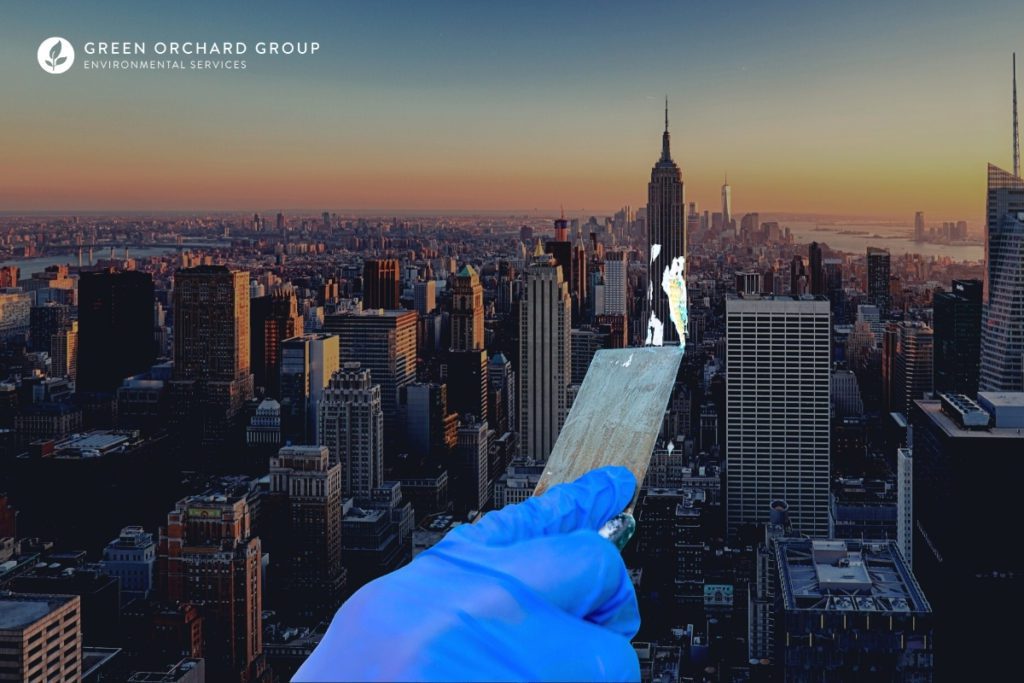
Before 1960, the usage of lead-based paint in New York City housing was extremely prominent.
Why was lead-based paint so popular? When lead is added to paint, it helps the paint dry faster, last longer, resist moisture, and maintain a fresh appearance for a long time.
However, it has also become one of New York City’s biggest environmental health problems of the past few decades.
New York City’s Lead-Based Paint Problem
The main problem with lead-based paint is that, as it deteriorates, it releases lead-containing dust and paint chips which can be inadvertently inhaled or ingested by people nearby — especially young children.
Once inhaled or ingested, lead is quickly absorbed into the bloodstream and circulated around the body. Even a small amount of lead is dangerous. In young children in particular, lead poisoning may have a long-lasting negative impact on both physical and mental development.
Awareness about the dangers and risks that lead-based paint poses to young children eventually prompted New York City to ban the use of lead-based paint in 1960. Almost two decades later, in 1978, the federal government also banned the sale of lead-based paint.
Although this stopped the use of lead-based paint in newer buildings, almost 70% of New York City’s housing was constructed before 1960. To this day, lead-based paint continues to exist on the walls, doors, and windowsills of hundreds of thousands of pre-1960 apartments in New York City.
Local Law 1 of 2004
In 2004, New York City passed the “NYC Childhood Lead Poisoning Prevention Act,” a comprehensive set of housing laws aimed at eliminating the threat of lead-based paint and protecting kids from lead poisoning.
These laws became commonly referred to as Local Law 1 of 2004. Since the passage of these lead paint regulations, the rate of lead poisoning in children has dropped by more than 92%.

What Does Local Law 1 Require?
Local Law 1 of 2004 requires landlords of pre-1960 buildings in New York City to proactively identify and remediate potential lead-based paint hazards. Under this law, any paint in pre-1960 buildings is presumed to contain lead unless tested and proven otherwise.
In order to protect tenants and children from lead exposure, landlords must do the following:
- Send an annual notice to tenants to find out if there are children under 6 residing in any apartment. By definition, “residing” means living or routinely spending 10 or more hours per week in the unit.
- At least once a year, conduct a visual inspection of any apartments where a child under 6 resides for lead paint hazards. Repair any lead paint hazards found in such apartments.
- Inspect and repair lead paint hazards whenever an apartment is vacated (during turnover) before a new tenant moves in.
- Use lead safe work practices and trained workers for any repair work involving presumed lead-based paint.
- Hire EPA-certified lead abatement professionals for any repair work that involves more than 100 square feet of paint, replacing windows, or fixing lead violations issued by HPD.
- Give tenants a copy of clearance dust wipe results after any repair of lead paint hazards has been completed.
- Inform tenants about the owner responsibilities listed above and provide all tenants with a copy of the pamphlet Lead Paint Hazards in the Home.
- Keep records of all notices, inspections, and repairs relating to lead-based paint.
You can learn more about landlord responsibilities and requirements here.
If a landlord hires an EPA-certified lead inspector to perform testing using X-Ray Fluoroscopy (XRF) analyzers to prove that all paint in their building is either free of lead or has been safely abated, they may apply for an exemption from Local Law 1 requirements.
How Is Local Law 1 Enforced?
New York City has a multi-pronged response for the enforcement of the lead-based paint rules and responsibilities outlined in Local Law 1 of 2004.
The Department of Housing Preservation and Development (HPD) regularly performs lead-based paint visual inspections and audits in apartments with children under 6 to ensure that landlords are in compliance with the annual investigation, recordkeeping, and turnover requirements. HPD also sends inspectors in response to 311 complaints from tenants.
New York City also requires children to be tested at the ages of 1 and 2 for elevated blood lead levels. If a child has been identified as having a blood lead level of concern, the Department of Health and Mental Hygiene (DOHMH) responds by inspecting the child’s apartment and other areas the child spends time in for lead-based paint hazards.
If lead-based paint hazards are found, DOHMH will issue a Commissioner’s Order to Abate (COTA) to the landlord for all areas where potential hazards have been identified. They will also request all records relating to lead-based paint notices, investigations, and repairs.
What Are the Consequences of Non-Compliance?
HPD and DOHMH will issue violations to landlords who do not comply with the requirements set forth by Local Law 1 and its amendments. If any lead paint hazards are found in an apartment where a child resides, it constitutes a class C “immediately hazardous” violation which carries penalties of up to $250 per day, with a maximum of $10,000.
If such violations are not corrected, HPD will send contractors to repair urgent lead paint hazards. All costs incurred from HPD’s Emergency Repair Program (ERP) are billed to the owner or landlord, in addition to additional fines and administrative fees.
HPD, as well as tenants, may also pursue litigation against non-compliant landlords.
In the worst-case scenario, failure to follow Local Law 1 requirements can result in a child being poisoned with lead, causing serious harm to their health and development.
